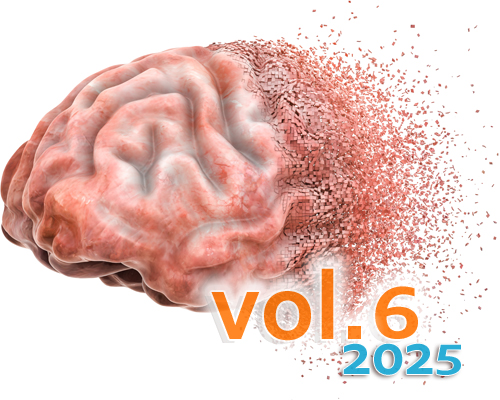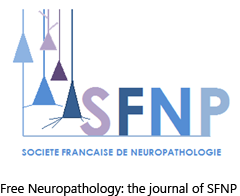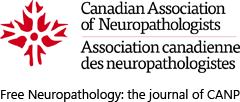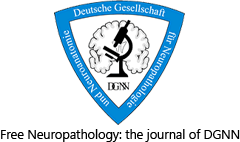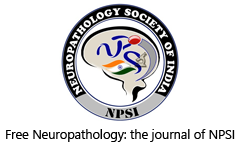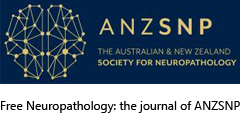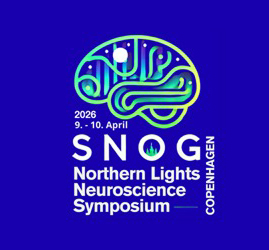Applying machine learning to assist in the morphometric assessment of brain arteriolosclerosis through automation
DOI:
https://doi.org/10.17879/freeneuropathology-2025-6387Keywords:
Machine learning, Artificial intelligence, Neuropathology, Arteriolosclerosis, Blood vessel, MorphometryAbstract
Objective quantification of brain arteriolosclerosis remains an area of ongoing refinement in neuropathology, with current methods primarily utilizing semi-quantitative scales completed through manual histological examination. These approaches offer modest inter-rater reliability and do not provide precise quantitative metrics. To address this gap, we present a prototype end-to-end machine learning (ML)-based algorithm, Arteriolosclerosis Segmentation (ArtSeg), followed by Vascular Morphometry (VasMorph) – to assist persons in the morphometric analysis of arteriolosclerotic vessels on whole slide images (WSIs). We digitized hematoxylin and eosin-stained glass slides (13 participants, total 42 WSIs) of human brain frontal or occipital lobe cortical and/or periventricular white matter collected from three brain banks (University of California, Davis, Irvine, and Los Angeles Alzheimer’s Disease Research Centers). ArtSeg comprises three ML models for blood vessel detection, arteriolosclerosis classification, and segmentation of arteriolosclerotic vessel walls and lumens. For blood vessel detection, ArtSeg achieved area under the receiver operating characteristic curve (AUC-ROC) values of 0.79 (internal hold-out testing) and 0.77 (external testing), Dice scores of 0.56 (internal hold-out) and 0.74 (external), and Hausdorff distances of 2.53 (internal hold-out) and 2.15 (external). Arteriolosclerosis classification demonstrated accuracies of 0.94 (mean, 3-fold cross-validation), 0.86 (internal hold-out), and 0.77 (external), alongside AUC-ROC values of 0.69 (mean, 3-fold cross-validation), 0.87 (internal hold-out), and 0.83 (external). For arteriolosclerotic vessel segmentation, ArtSeg yielded Dice scores of 0.68 (mean, 3-fold cross-validation), 0.73 (internal hold-out), and 0.71 (external); Hausdorff distances of 7.63 (mean, 3-fold cross-validation), 6.93 (internal hold-out), and 7.80 (external); and AUC-ROC values of 0.90 (mean, 3-fold cross-validation), 0.92 (internal hold-out), and 0.87 (external). VasMorph successfully derived sclerotic indices, vessel wall thicknesses, and vessel wall to lumen area ratios from ArtSeg-segmented vessels, producing results comparable to expert assessment. This integrated approach shows promise as an assistive tool to enhance current neuropathological evaluation of brain arteriolosclerosis, offering potential for improved inter-rater reliability and quantification.
Metrics
Additional Files
Published
How to Cite
Issue
Section
License
Copyright (c) 2025 Jerry J. Lou, Peter Chang, Kiana D. Nava, Chanon Chantaduly, Hsin-Pei Wang, William H. Yong, Viharkumar Patel, Ajinkya J. Chaudhari, La Rissa Vasquez, Edwin Monuki, Elizabeth Head, Harry V. Vinters, Shino Magaki, Danielle J. Harvey, Chen-Nee Chuah, Charles S. DeCarli, Christopher K. Williams; Michael Keiser; Brittany N. Dugger

This work is licensed under a Creative Commons Attribution 4.0 International License.
Papers are published open access under the Creative Commons BY 4.0 license. This license lets others distribute, remix, adapt, and build upon your work, even commercially, as long as they credit you for the original creation. Data included in the article are made available under the CC0 1.0 Public Domain Dedication waiver, unless otherwise stated, meaning that all copyrights are waived.

